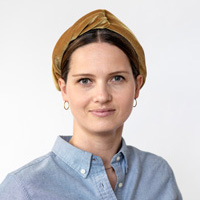Marie Kofod Svensson defends her PhD thesis at Department of Antropology
 Candidate
Candidate
Marie Kofod Svensson, University of Copenhagen & Danish Heart Foundation
Title
At the Heart of Living In-between: Paradoxes, (In)visibility, and Blurred Futures in Families Living with Congenital Heart Defects
Assessment Committee
- Professor Susan Reynolds Whyte
University of Copenhagen, Denmark (chair) - Professor Myra Bluebond-Langer
UCL GOS Institute of Child Health, United Kingdom - Senior Lecturer Gitte Wind
University College Copenhagen, Denmark
Host
Head of the PhD Programme in Anthropology, Professor Tine Gammeltoft
Time and venue
Time: 11 June 2020, 14:00 (The defence is scheduled to last a maximum of 3 hours)
A small online reception is planned after the defence
Summary
After decades of medical advances and consequently a steep rise in survival rates among children and youth with congenital heart defects (CHDs), this anthropological thesis explores how they and their families (particularly their parents) live with the defects that have now become chronic conditions in many cases. Based on extensive ethnographic fieldwork in the homes of families, at hospitals, and at patient organization events in Denmark, as well as on a systematic review and meta-ethnographic analysis of previous international qualitative research, the thesis suggests that life with CHDs is a matter of living between extremes.
Through three articles, the thesis looks at the struggles and possibilities of life when illness trajectories involve transitions from dramatic open-heart surgeries to everyday life at home and sometimes back again, when CHDs are or are made to be both visible and invisible (on the body, in memory, and in public understandings), and when prognoses are enmeshed in both optimism and uncertainty and ultimately deal with matters of life and death.
The tensions and entanglements of living between such extremes, and the strategies that families use to manage them, are explored by highlighting the chronic paradoxes that international studies collectively show families face (article 1), as well as the extensive (in)visibility work families do in their everyday lives (article 2), and the ongoing prognostic calibrations that they engage in at outpatient encounters (article 3) which became apparent through the ethnographic fieldwork in Denmark. These perspectives are interesting, as CHDs are the most common type of major congenital anomalies, and due to biomedical advances, children, youth, and adults with CHDs have become both a growing and a continuously changing population.
Link to PhD defence
The PhD defence can be followed on Zoom via this link:
https://ucph-ku.zoom.us/j/63012226015
The link will be open half an hour before the defence begins.
